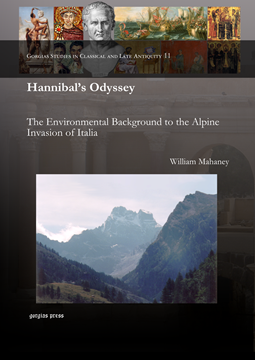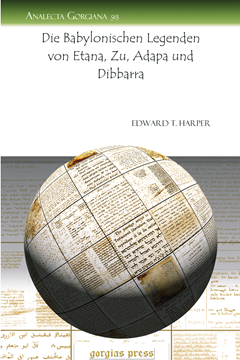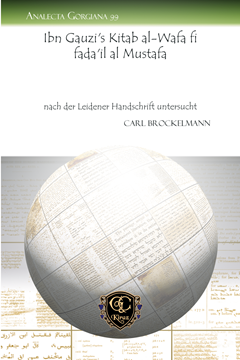Interpretation, Religion and Culture in Midrash and Beyond
Proceedings of the 2006 and 2007 SBL Midrash Sessions
Edited by Lieve M. Teugels & Rivka Ulmer
Series: Judaism in Context 6
ISBN: 978-1-59333-619-6
The third issue of Proceedings of the Midrash session at the SBL Annual meeting published in this series. This volume contains papers on religion in midrash (2006) and modes of biblical interpretation in rabbinic, Syriac and Islamic traditions (2007).
$161.00 (USD) $96.60 (USD)
Hannibal's Odyssey
The Environmental Background to the Alpine Invasion of Italia
ISBN: 978-1-59333-951-7
Hannibal's invasion of Italia in 218 BC is depicted from the standpoint of environmental evidence elicited from ancient texts, and analyzed against present-day Earth Science databases. The conclusion is that the Punic Army followed the southern route over the Alps; a proposal first made by Sir Gavin de Beer in the 1960's.
$142.00 (USD) $85.20 (USD)
Die Babylonischen Legenden von Etana, Zu, Adapa und Dibbarra
Series: Analecta Gorgiana 98
ISBN: 978-1-60724-022-8
In this continuously cited article on the Babylonian legends of Etana, Zu, Adapa and the South Wind, and Dibbarra, Harper provides a substantial wealth of detail. Each of these myths is treated with an introduction, transliteration, and translation. Philological notes are given along with a summary of the contents. Comparison is also made with other ancient tales that bear resemblance to those contained in this volume. Further remarks by H. Zimmern on the Adapa legend are also included. This study is accompanied by hand-drawn copies of the cuneiform tablets and a photographic archive of the various fragments of the texts.
$51.00 (USD) $30.60 (USD)
Ibn Gauzi’s Kitab al-Wafa fi fada’il al Mustafa
nach der Leidener Handschrift untersucht
Series: Analecta Gorgiana 99
ISBN: 978-1-60724-023-5
This investigation of Abu-al-Faraj Ibn al-Jawzi’s al-Wafa bi Fada'il al-Mustafa, according to the Leiden manuscript by one of Germany’s foremost Semiticists, is essential reading for anyone interested in Arabic history and literature. Ibn al-Jawzi was a twelfth-century jurist and perhaps the most prolific writer in the history of Arabic literature. Al-Wafa bi Fada'il al-Mustafa (Detailed Accounts of the Chosen Prophet), is a large work on the biography of the prophet Muhammad. In this manuscript study, Brockelmann analyzes several aspects of this composition, including citations of this work by other notable Islamic writers.
$45.00 (USD) $27.00 (USD)
Der Untergang Nineveh’s und die Weissagungsschrift des Nahum von Elkosch
Series: Analecta Gorgiana 100
ISBN: 978-1-60724-024-2
An elaborate historical treatise on the fall of Nineveh and the writings of the prophet Nahum, this work is divided into three chapters. The first contains a translation of Nahum’s oracle against Nineveh with both historical and Assyriological commentaries. The second chapter is a history and description of the city of Nineveh from earliest times to its downfall. A brief but interesting discussion of the origin and development of the Medes as a people closes the second chapter. The final chapter is an archaeological and scientific military description of ancient Assyrian fortifications and a treatise on their use in the warfare of the period.
$56.00 (USD) $33.60 (USD)
Die Briefe Hammurabi’s an Sin-Idinnam
Series: Analecta Gorgiana 101
ISBN: 978-1-60724-025-9
In keeping with the general format of nineteenth-century Assyriological publications, this study provides an abundance of information on the texts under consideration. Here, the correspondence between the famous Babylonian king Hammurabi and the governor of Larsa, Sin-Idinnam, is examined in detail. Nagel also includes commentary, beginning with grammatical and syntactical issues. Next he turns to lexical issues, beginning with individual words, compound words, and ideograms. Friedrich Delitzsch also adds further remarks to Nagel’s adequate analysis of these historically significant texts.
$47.00 (USD) $28.20 (USD)





